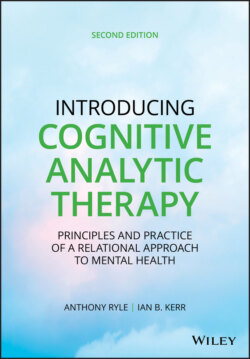Читать книгу Introducing Cognitive Analytic Therapy - Anthony Ryle - Страница 40
The Course of Therapy
ОглавлениеBefore the next session, he left a note in which he said his relationship with Elizabeth his partner was definitely over and could he have an extra session? I said I couldn't see him for an additional session and he later left a letter saying he wanted to stop the therapy:
I think I am going to have to stop the therapy for now. It has been very revealing but is too much at the moment and I must concentrate on my studies. I am writing so you can allocate tomorrow's session to someone else but if you would like to see me I am on the phone. If not, then I ‘d like to thank you for all your hard work and for helping me to see so many things about myself which need to be changed.
On the telephone I said I felt strongly that we should have one session to review how his wish to end fitted into the patterns we had already identified. At the next session he said that he had felt very relieved by my telephone call. He wanted to continue and had had a “breakthrough” by seeing all the places on the diagram where he could do different things. In particular he had made a feature of having 15 minutes' self‐care time when he felt most agitated. He had other plans of self‐care such as going to the gym and not smoking at night. He described what he called his third‐person perspective as a way of standing back and looking at himself: not being in a state but looking at the state he was in. A simplified version of the diagram showing a key RR (Figure 2.1a) and the enactment of a key RRP (Figure 2.1b) is shown in Figure 2.1.
From session 4, Bobby had rated his progress on his aims of recognizing and revising his identified problematic procedures (TPPs). Figure 2.2 shows a rating sheet for the first of these.
